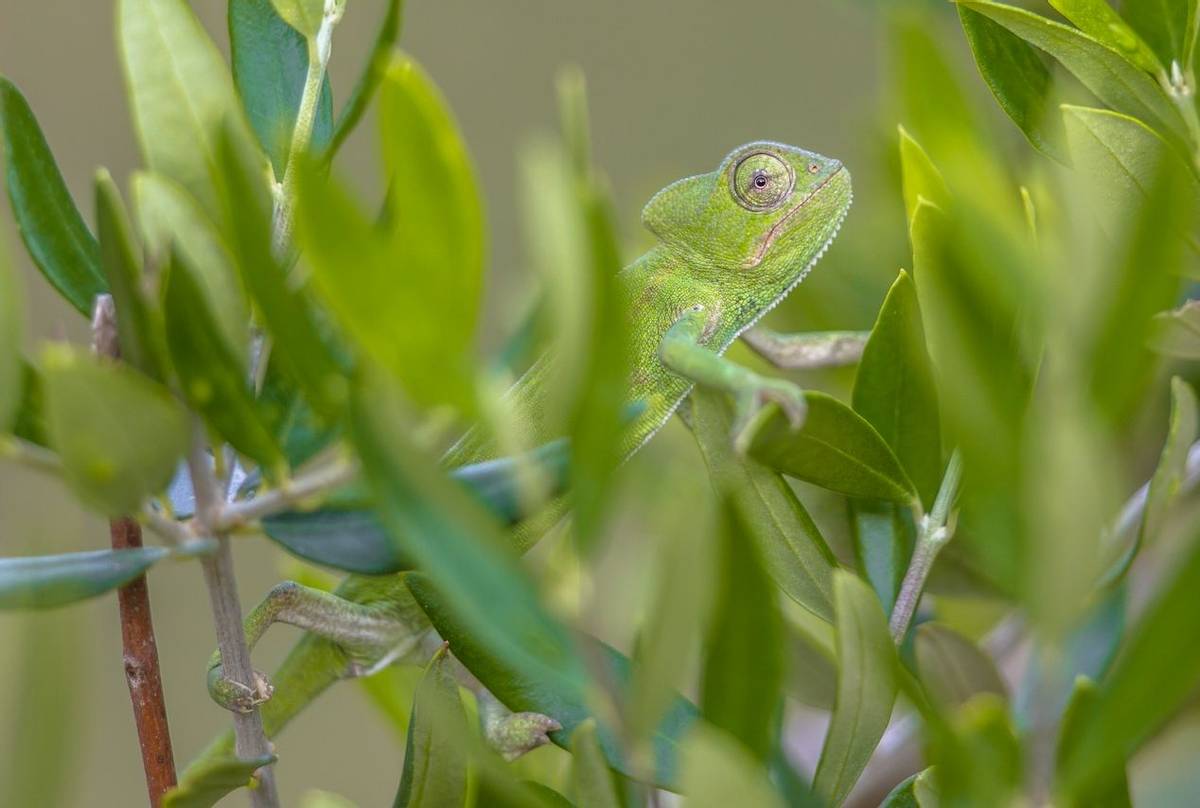


Tour Itinerary and Reports
Can I help you?
Greece - Spring in the Peloponnese
Tour Code: GRC21A 9-day wildlife holiday to the Peloponnese in southern Greece to enjoy the region’s birds, flowers and ancient history.
£2,395
£2,195
Highlights
Tour Itinerary and Reports
Can I help you?
Quick Enquiry
Summary
The Peloponnese forms the southern part of mainland Greece and offers some wonderful wildlife experiences early in the spring, before more traditional locations further north burst into life. We time our visit for some of the best orchid displays in the region, as well as for the onset of the northbound spring bird migration, and mix in some cultural experiences too.
Our tour begins with a flight to Athens and three nights in Pylos, on the Peloponnese’s south-western coast, from where we will enjoy the wildlife around the town and the nearby Gialova Lagoon. Here African Chameleon is the jewel in the crown of the region’s 46 species of reptiles and amphibians — a total unrivalled anywhere else in Europe! Birdlife is abundant and diverse, as are the extraordinary carpets of colourful flowers, which will be one of the main focuses of this tour. Moving on, we will spend four nights in the town of Areopoli whilst we explore the slopes of Mount Taygetos — rich in endemic plants, including Fritillaria davisii, Fritillaria conica and Scilla messeniaca – and visit Cape Tenaro, the most southerly point on mainland Greece. The cape is home to an interesting flora and is landfall for numerous migrating birds. Harriers in particular pass this way, while previous trips have produced Rüppell’s Warblers, Rufous-tailed Scrub-robin and Isabelline Wheatear among others.
Finally, we will make our way back north for a night in the town of Nafplio, located at the base of the Peloponnese’s ‘thumb’. En route we will break our journey at the ancient Byzantine regional capital of Mystras (near Sparta) and later at Mycenae, which dates back to the second millennium BC. The wetlands around Nafplio are a magnet for birds such as Slender-billed Gull, Caspian Tern and Zitting Cisticola and we will enjoy these — and many more — before returning to Athens in time to catch our flight home.
- Migrant and breeding birds
- Colourful spring flora including some endemics
- A hotspot for reptiles and amphibians
- Stunning Mediterranean landscapes
- Ancient sites
The Peloponnese forms the southern part of mainland Greece and offers some wonderful wildlife experiences early in the spring, before more traditional locations further north burst into life. We time our visit for some of the best wildflower displays in the region, as well as for the onset of the northbound spring bird migration, and mix in some cultural experiences, too.
Southern mainland Greece is a surprisingly large and varied region, joined to the rest of the continent by the narrow isthmus of Corinth, famous for its impressive canal. The great wealth of habitats here span from snow-topped mountains, through pine and oak woods, stony slopes and cultivated fields, right down to the warm, Mediterranean lowlands, with their olive and orange groves, vineyards, coastal wetlands and sandy beaches. We will explore many of these, as we journey through all three of the region's rocky 'fingers' that project southward into the sea.
We begin with a flight to Athens and three nights in Pylos, on the Peloponnese's south-western coast, from where we will enjoy the wildlife around the town and the nearby Gialova Lagoon. Here African Chameleon is the jewel in the crown of the region's 46 species of reptiles and amphibians — a total unrivalled anywhere else in Europe and including a number of endemics, such as Peloponnese Wall Lizard, Greek Algyroides and Peloponnese Slow-worm. Birdlife is plentiful and diverse and many migrants use the lagoon and surrounding fields on passage. There are usually a few Greater Flamingoes around and passage waders typically include good numbers of Ruff at this time of the year. We will check local hotspots for Little Crake and Red-throated Pipit before enjoying a complete change of scenery with a walk through cool woodland to a hidden waterfall. Cyclamens flower along the tracksides and we will search the pools for Greek Stream Frog. This strategically well-placed region has changed hands many times, as witnessed by the wealth of castles and fortified buildings that are scattered around the rugged coastline. We will visit some of these to enjoy their wildlife, as such ancient sites typically escape the worst of modern-day development and the flowers can be superb at this time of the year, with Cretan Comfrey and swathes of pink and lilac stocks amongst the many to be enjoyed. Here, too, we will look for resident Blue Rock Thrush and Sardinian Warblers, along with migrant Hoopoe, Eastern Subalpine Warbler, Northern and Eastern Black-eared Wheatears and more.
Moving on, we will spend four nights in the town of Areopoli while we explore the rugged Mani Peninsula — the southern extension of the Taygetos massif — and visit Cape Tenaro, the most southerly point on mainland Greece. The cape is home to an interesting flora, including Sideritis romana ssp. curvidens, Centaurea raphanina ssp. mixta, Silene integripetala ssp. lidenii and Allium circinnatum ssp. peloponnesiacum and is landfall for numerous migrating birds. Harriers in particular pass this way, while previous trips have produced Rüppell's Warblers, Rufous-tailed Scrub-robin and Isabelline Wheatear among others. On the Mani, wildflowers simply abound in spring, with mile upon mile of roadside carpets of colour. Mediterranean and Greek Spiny Spurges, Silene integripetala ssp. inegripetala, Violet Honeywort, Yellow Asphodel, Hairy Spiny-broom, Mani Hairy Vetch, Black-eyed Vetch, Orange Trefoil, Chios Chamomile and many, many more, line our route, while orchid-hunters can look for Eyed, Spruner's, Rainbow and Horseshoe Bee Orchids, all tucked in with bright red patches of the endemic Goulimy's Tulips.
We will complete our exploration of the southern Peloponnese with a visit to the abandoned village of Vathia — a charming medieval hamlet characterised by stone buildings and cobbled paths, sporting fine views of the surrounding coastline. During the spring, this attractive village is awash with colourful wildflowers and abundant insects, including carpets of yellow Greek Fenugreek and purple Hairy Vetch, pink Calabrian Crane's-bill, white Chios Chamomile and stands of exquisite Violet Honeywort.
Finally, we will make our way back north for a night in the town of Nafplio, located at the base of the Peloponnese's 'thumb'. En route we will break our journey at the ancient Byzantine regional capital of Mystras (near Sparta) and later at Mycenae, which dates back to the second millennium BC. The wetlands around Nafplio are a magnet for birds such as Squacco Heron, Garganey, Slender-billed Gull, Caspian Tern, Black-headed Wagtail and Zitting Cisticola and we will enjoy these — and many more — before returning to Athens in time to catch our flight home.
Outline Itinerary

Dates & Prices
2026

Tour Leader: Mike Crewe
Born and raised in Oxford, Mike has lived most of his life in East Anglia, with a short stint in West Sussex and a spell in the USA. He has been a birdwatcher ‘since birth’ (so he says!) and initially took up a career in horticulture, which kick-started an interest in plants. Over time, Mike has evolved into an all-round naturalist with interests in all branches of natural history, working a short time for the British Trust for Ornithology and as an environmental consultant before taking up wildlife tour guiding in 1996. Indeed, he first led walks for local wildlife trusts and bird groups as long ago as 1982 and has continued as a professional guide since the late 1990s, except for six years in the USA, where he worked as Program Director for the famous Cape May Bird Observatory in New Jersey.
Now settled back on the Norfolk coast, he lives with his wife, who is also a professional birdwatching guide. He has served as a committee member on the Suffolk Birds Records Committee, edited various natural history newsletters and bird reports and recently authored two identification guides on the flora of Breckland. Most recently, he has taken on a role as Assistant Editor for British Birds magazine and serves as the Norfolk tutor for the national ‘Identiplant’ training scheme. Somehow, he also manages to find time to maintain two identification websites on the flora of East Anglia and the wildlife of Cape May County, New Jersey!

Tour Leader: Mike Crewe
Born and raised in Oxford, Mike has lived most of his life in East Anglia, with a short stint in West Sussex and a spell in the USA. He has been a birdwatcher ‘since birth’ (so he says!) and initially took up a career in horticulture, which kick-started an interest in plants. Over time, Mike has evolved into an all-round naturalist with interests in all branches of natural history, working a short time for the British Trust for Ornithology and as an environmental consultant before taking up wildlife tour guiding in 1996. Indeed, he first led walks for local wildlife trusts and bird groups as long ago as 1982 and has continued as a professional guide since the late 1990s, except for six years in the USA, where he worked as Program Director for the famous Cape May Bird Observatory in New Jersey.
Now settled back on the Norfolk coast, he lives with his wife, who is also a professional birdwatching guide. He has served as a committee member on the Suffolk Birds Records Committee, edited various natural history newsletters and bird reports and recently authored two identification guides on the flora of Breckland. Most recently, he has taken on a role as Assistant Editor for British Birds magazine and serves as the Norfolk tutor for the national ‘Identiplant’ training scheme. Somehow, he also manages to find time to maintain two identification websites on the flora of East Anglia and the wildlife of Cape May County, New Jersey!
2027
Prefer to Travel in a Private Group?
For any interested natural history club or society, we can arrange for a private departure of this tour.
Enquire
Why Naturetrek?
At Naturetrek we craft expertly-guided group and tailor-made wildlife holidays and cruises to all seven continents. On one of our holidays, you can be assured that our passionate team will enable you to experience and enjoy the best of the world's wildlife and natural spectacles in as comfortable and rewarding a manner as possible, caring as best we can for the environment in the process. We are proud to provide:
- The widest choice of wildlife holidays worldwide
- Tours managed and led by naturalists, for naturalists
- Outstanding value and exceptional customer service
Furthermore, as a Naturetrek client, our office team are always to on hand to help you – so if you have any queries about your holiday, whether before or after you have booked, we will be delighted to answer them on the phone. Please just give our team a call!



 Loading search...
Loading search...



















